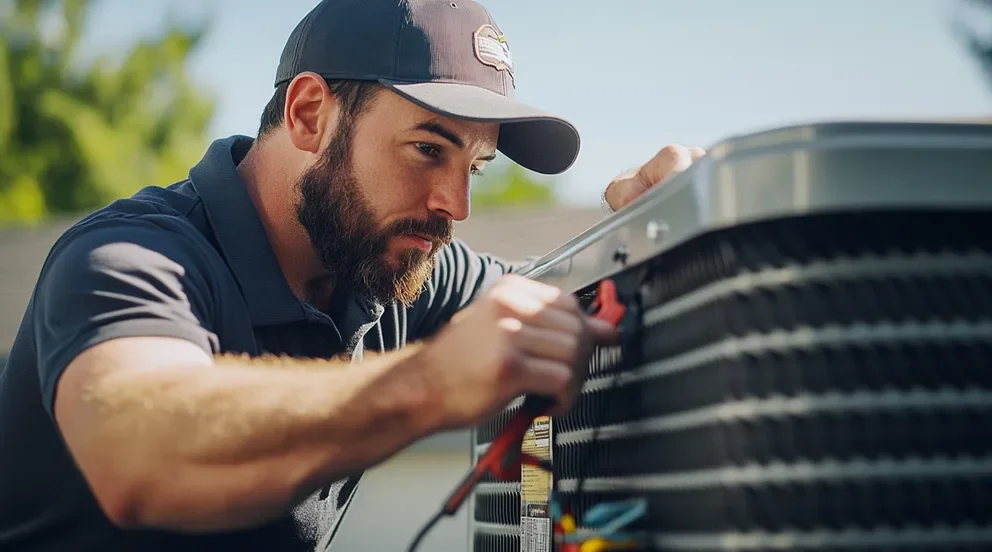Proposal Generation Software is a type of application or platform designed to simplify and streamline the process of creating business proposals. It provides users with tools to produce professional-looking, customized proposals quickly. By automating much of the traditional proposal-writing process, this software enables sales teams and individuals to focus more on the content and less on the formatting and design aspects.
The software typically comes with a range of features including templates, content libraries, and collaboration tools. Templates offer a starting point for crafting proposals, ensuring consistency and adherence to brand guidelines. Content libraries store reusable texts, images, and videos, which can be easily inserted into new proposals. Collaboration tools allow multiple team members to work on the same document simultaneously, making the process more efficient and reducing turnaround times.
Moreover, proposal generation software often integrates with other business tools like CRM (Customer Relationship Management) systems. This integration streamlines data collection, allowing for the automatic insertion of client-specific information into proposals. It enhances personalization and accuracy, crucial aspects in winning new clients and projects. By leveraging such technology, businesses can significantly improve their proposal quality and success rate, while also saving time and reducing manual errors.
Proposal generation software is revolutionizing the way businesses approach the task of proposal writing. Gone are the days of spending countless hours manually drafting proposals. This advanced technology is making it easier for companies of all sizes to produce high-quality, customized proposals in a fraction of the time. With the growing competition in various industries, the ability to quickly generate compelling proposals has never been more critical.
This software not only simplifies the creation process but also elevates the standard of proposals submitted to potential clients. By utilizing a range of templates and design options, businesses can ensure that each proposal stands out, reflecting the company’s professionalism and attention to detail. This initial impression can be crucial in winning new contracts and fostering long-term relationships with clients.
As the business landscape becomes increasingly digital, the demand for efficient and effective tools like proposal generation software continues to rise. The introduction of such software into a company’s workflow has the potential to transform its operations, enabling it to respond more swiftly to market opportunities. This technology empowers businesses to streamline their processes, improve their offering, and ultimately, enhance their competitiveness in the marketplace.
Advancements in Electric Vehicle (EV) Battery Technology
The realm of electric vehicles (EV) is witnessing a remarkable transformation. This change is primarily driven by significant advancements in battery technology. These developments focus on increasing energy density, reducing charging times, and extending the lifespan of batteries. As a result, electric vehicles are becoming more accessible and practical for everyday use.
Firstly, one of the key improvements has been in the area of energy density. Modern batteries can store more power in a smaller space. Consequently, electric vehicles can travel longer distances on a single charge. This breakthrough is pivotal. It alleviates range anxiety, a major concern for potential EV buyers.
Moreover, fast charging technology is evolving at an impressive pace. Historically, one of the drawbacks of EVs was the lengthy charging times. However, recent innovations enable batteries to charge much faster. Some can reach 80% capacity in just minutes. Naturally, this development enhances the convenience of using electric vehicles.
Another critical area of progress is in extending battery life. Innovators are discovering new materials and designs that minimize degradation. Batteries now retain their capacity for more charge cycles. Therefore, they last longer before needing replacement. This improvement not only reduces the cost of owning an EV but also lessens environmental impact.
Additionally, efforts are being made to ensure that these batteries are more environmentally friendly. Researchers are focusing on materials that are less harmful and easier to recycle. This approach is crucial for the sustainable growth of the electric vehicle industry. Proposal Generation Software
In conclusion, the advancements in EV battery technology are shaping a future where electric vehicles are a common sight on roads. With the promise of longer ranges, faster charging, and more durable batteries, the shift towards electric mobility seems not only inevitable but also highly beneficial for the environment. Through continuous research and development, the potential of electric vehicles continues to expand, making the transition away from fossil fuels more feasible than ever.
Electric vehicles (EV) have recently witnessed a dramatic improvement in battery performance. This surge in efficiency can be attributed to several innovative breakthroughs in technology and materials science. Notably, there has been a significant development in energy density. This means that newer batteries can store more power in the same amount of space, extending the driving range of EVs substantially.
Furthermore, advancements in charging technology have facilitated faster charging times. Presently, specific new models can achieve an 80% charge in just minutes, a substantial improvement from the hours once required. This has greatly enhanced the practicality of EVs for everyday use and long-distance travel.
Another notable stride has been made in enhancing battery lifespans. The latest batteries exhibit a much slower degradation rate over time. Consequently, they can retain a larger portion of their capacity after several years of use, surpassing previous expectations. This improvement not only makes EVs more reliable but also reduces the environmental impact by diminishing the frequency of battery replacements. Proposal Generation Software
Moreover, researchers have made progress in creating batteries with less rare and potentially hazardous materials. This shift not only promises to reduce costs but also alleviates environmental concerns associated with battery production and disposal.
Equally important, thermal management systems within batteries have seen significant enhancements. These systems are crucial for maintaining battery efficiency and safety. Improved thermal management means batteries can operate more effectively in a broader range of temperatures, which is especially beneficial in extreme weather conditions.
In summary, the recent breakthroughs in EV battery performance mark a significant leap forward for the electric vehicle industry. These advancements not only improve the user experience by extending driving ranges and reducing charging times but also contribute to making EVs more sustainable and accessible. With ongoing research and innovation, the future of electric vehicles looks brighter than ever.
Innovations in Charging Speed and Infrastructure for EV Batteries
The electric vehicle (EV) industry is witnessing extraordinary advancements, particularly in the realms of charging speed and infrastructure. Notably, recent innovations have drastically minimized the time required to charge EV batteries, making electric vehicles more appealing to consumers. Moreover, developments in infrastructure are enhancing accessibility, thereby supporting the widespread adoption of electric cars.
Rapid charging technology has emerged as a game-changer. It now enables EV batteries to charge from 0 to 80% in just minutes, rather than hours. This leap forward is a result of intensive research and development in battery chemistry and charging systems. Consequently, these improvements are significantly reducing one of the main barriers to EV adoption – the concern over charging times.
Additionally, the expansion of charging networks is playing a crucial role in making EVs more practical for daily use. Urban and suburban areas are witnessing a surge in the availability of charging stations. Similarly, efforts are underway to increase the number of fast-charging stations along highways. This development is ensuring that drivers can recharge quickly during long journeys, thus enhancing the overall convenience of driving an electric vehicle.
Another critical area of innovation is the integration of renewable energy sources with EV charging infrastructure. Some new charging stations now use solar or wind energy to charge vehicles, promoting sustainability. This approach not only reduces the carbon footprint of electric vehicles but also decreases the reliance on the grid.
The landscape of EV charging is, therefore, transforming rapidly. Innovations in charging speed and the expansion of infrastructure are fueling the growth of the electric vehicle market. As these advancements continue, the future of transportation appears increasingly electric. With the ongoing support for research and development, electric vehicles are set to become more convenient, accessible, and environmentally friendly than ever before.
The Role of Sustainable Materials in EV Battery Manufacturing
As the world shifts towards electric vehicles (EVs) to reduce greenhouse gas emissions, the focus on sustainable materials for EV battery manufacturing has intensified. Batteries power EVs, and their environmental footprint is under scrutiny. Sustainable materials come into play to lessen this impact. They are crucial for several reasons. Firstly, they reduce the depletion of finite resources. Traditional battery manufacturing relies heavily on metals like lithium, nickel, and cobalt. These resources are limited and are extracted from the earth through mining, which poses environmental challenges. By adopting sustainable materials, manufacturers can alleviate some of these issues. Proposal Generation Software
Furthermore, sustainable materials can lead to better recycling processes. End-of-life battery handling is a significant concern for the environment. If batteries are made from more sustainable components, recycling becomes easier and more efficient. This shift can substantially decrease the ecological footprint of EVs. Additionally, using sustainable materials often results in batteries that are lighter and more energy-efficient, enhancing the performance and range of EVs. Such improvements are vital for consumer acceptance and the overall success of the EV market.
Governments and industry leaders have recognized the importance of sustainable materials in EV battery manufacturing. Policies and investments are increasingly focusing on research and development in this area. These efforts aim to find new materials that can replace or reduce the use of critical metals. Advances in technology could unlock the potential of materials that are abundant, environmentally friendly, and cost-effective.
In conclusion, sustainable materials play a pivotal role in EV battery manufacturing. They offer a path towards reducing environmental impact, improving battery performance, and ensuring the long-term viability of the EV industry. As technology progresses, the quest for sustainable materials will continue to be at the forefront of making EVs a truly green technology.
Impact of EV Battery Technology on Vehicle Range and Efficiency
The revolution in electric vehicle (EV) technology is largely driven by advancements in batteries. These power sources are pivotal in determining an EV’s range and efficiency. Over the years, a significant leap in battery technology has enabled electric vehicles to achieve greater distances on a single charge. Thus, improving the practicality and appeal of EVs for the average consumer.
Innovations in battery composition, notably the shift towards denser and lighter materials, have played a crucial role. Consequently, modern EVs can store more energy without a proportional increase in weight. This efficiency directly correlates to extended travel ranges, reducing the need for frequent recharging. Moreover, the efficiency of power delivery from the battery to the wheels has seen remarkable improvements. Enhanced battery management systems ensure optimal power use, contributing further to the overall vehicle efficiency.
The increased energy density of batteries also impacts vehicle design and performance positively. Manufacturers can now allocate more space for comfort and safety features without compromising on the vehicle’s range. Additionally, the enhanced power delivery contributes to better acceleration and overall performance, making EVs more competitive with conventional vehicles.
However, the pursuit of longer ranges and greater efficiency doesn’t come without challenges. The demand for resources critical to battery production is rising, leading to concerns about sustainability and supply chain pressures. Researchers are therefore focusing on alternative materials that are more abundant and less environmentally taxing.
In conclusion, battery technology is at the heart of the transformation in the automotive industry towards sustainable transportation. As these batteries become more advanced, electric vehicles are setting new benchmarks for range and efficiency. This evolution not only promotes environmental conservation but also positions electric vehicles as a viable and practical choice for a broader range of consumers. It’s clear that the future of transportation is closely tied to the ongoing advancements in EV battery technology. Proposal Generation Software
Future Trends and Potential Developments in EV Battery Design
Electric vehicle (EV) battery design is on the brink of several significant breakthroughs. As the demand for electric vehicles continues to soar, innovations in battery technology could greatly enhance their appeal. This includes increasing their range, reducing charge times, and improving overall vehicle performance. Importantly, sustainability and recyclability are becoming pivotal in battery design, reflecting a growing concern for environmental impacts.
Foremost among these innovations is the development of solid-state batteries. These have the potential to replace the liquid electrolytes used in current lithium-ion batteries with solid alternatives. Consequently, solid-state batteries could offer higher energy density, longer life spans, and enhanced safety. They may also reduce the risk of battery fires. Though challenges remain in their commercialization, rapid progress suggests solid-state technology could dominate the market in the coming decades.
Another area of intense research is the exploration of new materials for cathodes and anodes. Scientists are searching for alternatives that are more abundant, less expensive, and have a lower environmental footprint than current materials. Innovations like silicon-based anodes or sulfur-based cathodes promise to significantly increase battery capacity and reduce costs.
Moreover, advances in battery architecture are redefining the way power is stored and distributed within a battery. Through innovative designs, batteries are becoming more efficient and lighter, which directly translates to better vehicle performance and range. Techniques like 3D printing are being explored to create complex internal structures that could offer superior performance and faster charging capabilities.
Finally, the integration of artificial intelligence (AI) into battery management systems is set to revolutionize EV batteries. AI can optimize charging strategies, improve the longevity of batteries, and enhance safety features. As a result, the management of batteries becomes more efficient, contributing to the overall performance and durability of electric vehicles. Proposal Generation Software
In sum, the future of EV battery design is bright, with innovations poised to overcome current limitations and propel electric vehicles into a new era of efficiency and sustainability.





